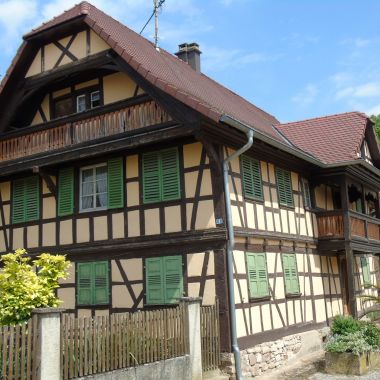Description

The history of the village of Hurtigheim begins with the arrival of the Romans in Alsace. The road linking Strasbourg and Metz passes through Hurtigheim, the present Roman road, and a watchtower was on the site of the present church tower. The Alamans settled in Alsace (377) and the first mention of Hurtigheim appears in 778 under the name of Hirtunghaim following the passage of Charlemagne. Then Hirtingheim in 1371, Hirtigheim in 1496, Hirtenheim in 1501, Hirtingenn in 1543. Under the old regime, the village of Hurtigheim belonged half to the family of Zorn of Plobsheim and a quarter to the Zorn of Bülach. The Lutheran religion was introduced in 1541 by the Zorn family. A direct road between Hurtigheim and Plobsheim, corresponding to the current county road 222, showed the privileged relations between the two villages belonging partly to the Zorn of Plobsheim.
The periods of peace linked to the progress of agriculture in the 18th and 19th centuries made Hurtigheim a rich village benefiting from very good agricultural land allowing good yields and the proximity of the Strasbourg market. Mixed farming was then in use and the village was known in particular for its madder as well as its tobacco and hops.
At this time, the village acquired impressive farm buildings, some of which are still in use. The "granary role" of Strasbourg, played by the Kochersberg, was further strengthened with the opening of the tramway to Westhoffen which served Hurtigheim from 1903.
More information
- By bus
- On a route that is accessible by bus
Access
1 Place de la Liberté
- mairie
67117 Hurtigheim










